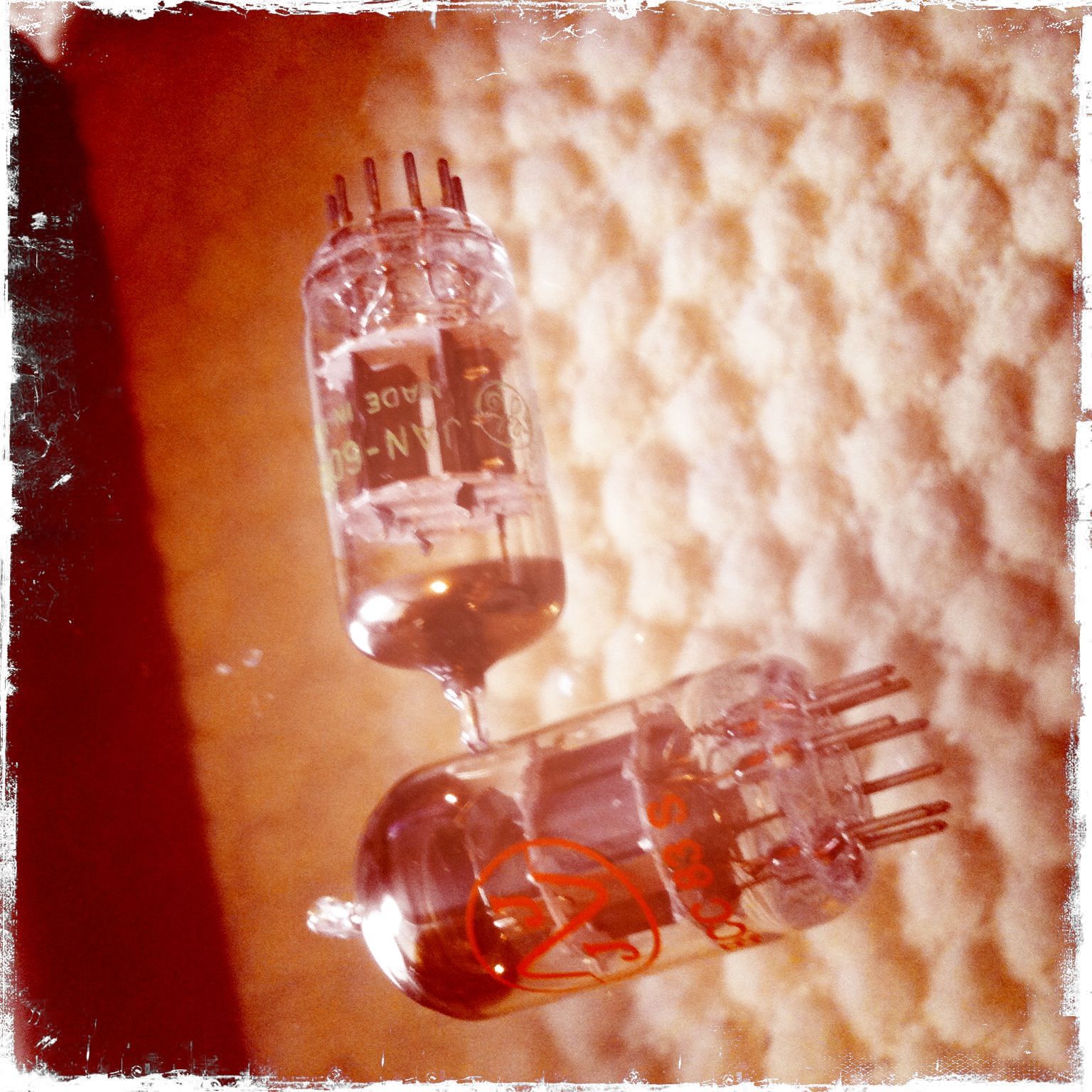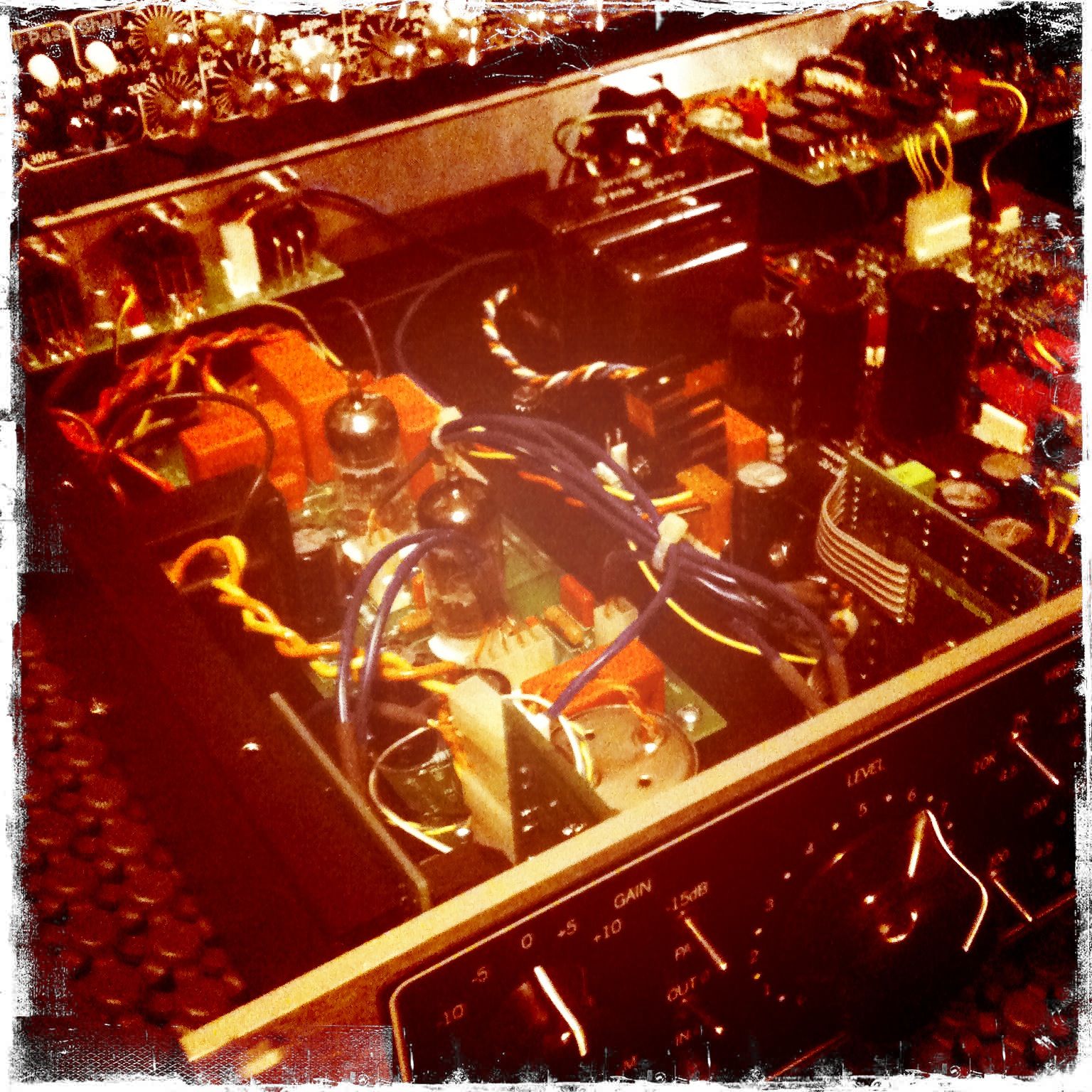Modifications and Enhancements
Tube Swapping and Preamps
How much difference will vintage tubes make? Unfortunately, this question will only be definitively answered by swapping the tubes and critically listening yourself… However, a little research will tell you if it is likely to be worth the effort and money. High-Fi Preamps, Comps, EQs and Microphones will rarely sound drastically different unless there is a bad tube somewhere in the comparison. The difference in tone is usually subtle, but in the right gear it will alter the clarity, headroom, warmth and frequency response.
What is the right gear? You may have seen internet references to "tube" gear vs "toob" gear. I don't really like term "toob" as it is usually used as a negative reference to newbie fake tube gear. Plenty of great quality recordings have been done solely with "toob" gear. Gear snobbery aside, the way tubes are used in a specific piece of gear will tell you a lot about the sonic differences to expect with tube swapping.
"Tube" means high voltage gear that places the tube directly in the signal path and has an adequate hot plate to drive the tube to saturation. The tube is directly involved with any increase in gain with this design. As the tube is driven harder by a higher voltage, it provides gain and saturation.
"Toob" means lower voltage gear where the tube is typically placed outside of the signal path and used as a secondary effect. This is often referred to as a "starved plate" design, meaning that the hot plate is only designed to provide a very limited voltage to the tube and the gain is mostly provided by a solid state design.
"Toob" gear will not drive a tube to saturation. It is more of an attempt to advertise gear and capitalize on the reputation of tube driven gear than an attempt to utilize a tube's sonic capabilities. Some of the most common toob brands are Art, Presonus, Behringer, Dbx, Alesis, Studio Projects as well as a whole host of other modern gear. Swapping tubes in toob gear will yield very limited sonic benefits and isn't worth the money and time. That is not to say that the gear itself is not capable of making some great records, just that it is a solid state design for the most part… If you do have true high voltage "tube" gear, than swapping tubes is a great way to tweak your tone. A little web research will typically reveal the gear specs and maybe some personal experiences with tube swapping.
 Tube Swapping
Tube Swapping 
Tube Testers:
Jackson Model 648S Tube Tester - While this is not at the same level as a Hickock tube tester, it does a good job of giving a general reading on the life of a tube. I am not the vintage tube selling business, so this unit suits me just fine. I buy most of my vintage tubes off of eBay and this to see what condition they are in.
Microphones:
Audio Technica 4060 Tube Microphone - This came with a SOVTEK tube which didn't sound bad at all. I just wanted to try out some different tubes to see if it opened up the high end frequencies and increased clarity while keeping that tube warmth. I tried a few different tubes, but eventually found that a VOS Telefunken did just that. Since the tube change I have not thought once about upgrading my primary lead vocal mic from the AT 4060.
Preamps:
HHB Classic 60 Solid State Microphone Preamps and Stereo Tube Compressor - This was my first ever front end recording gear purchase off of eBay. The solid state pres were nothing special and the tube compressor was a bit too transparent for my taste. It is actual high voltage plate tube gear, not the prosumer style gear that throws in an under driven tube for advertising reasons. I decided to see how better tubes would effect the sound. I popped it open one day and swapped the SOVTEK tubes for some 1950's RCA Blackplate Square Getter 12AX7's it made a pretty decent difference. Warmer and more rounded, but it still remained too transparent. Not a bad thing, but not what I needed out of that piece of gear. I sold this and put the momey toward getting the UA 6176 which got me more of what I was craving.
Universal Audio 6176 Microphone Preamp, Compressor and Equalizer - It came with a JJ-12AX7 in the preamp spot and a JAN 6072A - 12AT7 in the compressor spot. I upgraded to a 1966 Seimens E81CC in the preamp section for a crystal clear and creamy high end, and then used a 1968 Mullard ECC 81to get that mid-range warmth in the compressor section without sacrificing all of the detail. The overall effect is modern tube gear that gives me the flexibility to get clean warmth and still get a serious vintage tone when I drive it hard.
Avalon 737SP Tube Microphone Preamp, Compressor and Equalizer - With all of the tubes in this gear I expected some serious tube warmth to the tone. I bought this piece of gear as my primary preamp, compressor and eq. I spent a lot of time trying to tweak this unit for all kinds of inputs with little success. I tried swapping tubes a few times with very limited results. I know this unit has its fans, but I feel like it should have come with a disclaimer like "warning this unit possesses neither the benefits of a high quality solid state transistor based design, nor does it provide any of the sonic benefits of its all tube signal path." It sat firmly in some sonic middle ground. I found it extreamly difficult to find sweet spots with this unit and never really liked my results with it. I sold the 737 and put it toward a Great River MP2-NV (amazing sounding preamp) to get that super clean/transistor sound to contrast with the UA 6176.
Great River MP2-NV : No tube swaps here, but trading the Avalon 737SP toward the purchase of a used Great River MP2-NV was one of the best gear decisions of my recording life. It has saved me countless hours as a one man recording studio artist since the MP2-NV has only 2 knobs and a few button options that can be set in seconds and every setting sounds good! It has the ability to handle clean crisp detailed acoustic tones and can even thicken up the sound nicely when you push the transistor. It has truely taken my signal chain to a new level. The direct inputs work wonderfully for bass guitar, synths, circuitbent devices, external effects loops and analog drum machines as well. I can't say enough good things about this stereo preamp as the front end of a premium one man studio. Just wanted to add this preamp to the page to say "don't get overly hung up on tube gear". Good transistor gear can have amazing clarity and saturation that can really impart some warmth and thickness to your sound.
Guitar Gear:
I have swapped tubes in everything from amps to stamp boxes. Tubes are pushed hard in guitar gear, so the tone differences can be pretty extreme compared to high-fi tube swapping.

